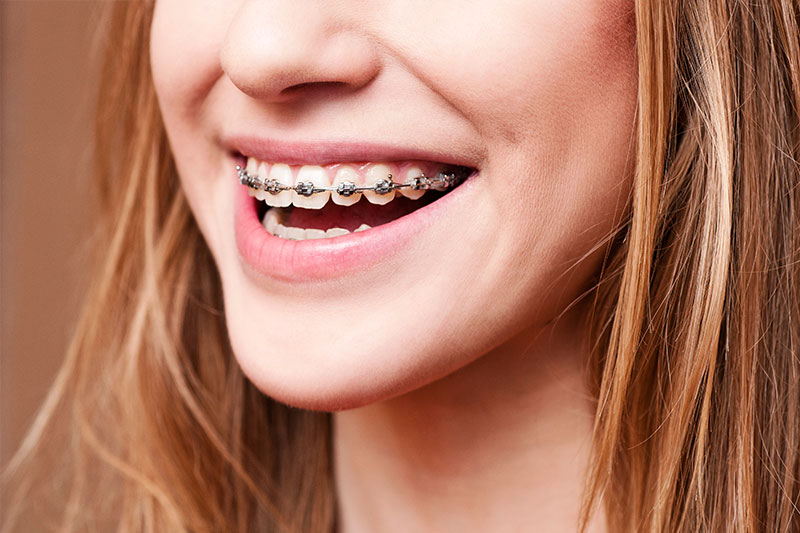Your Trusted Orthodontist Lockhart for Advanced Dental Care
Your Trusted Orthodontist Lockhart for Advanced Dental Care
Blog Article
The Duty of an Orthodontist in Achieving Optimum Oral Wellness and Aesthetic Appeals
The function of an orthodontist expands beyond plain aesthetic improvement; it is important to achieving ideal oral health and wellness via the adjustment of dental imbalances and malocclusions. By utilizing numerous therapy modalities, orthodontists not just help with appropriate alignment yet likewise address underlying issues that can jeopardize lasting oral health and wellness.
Value of Orthodontic Treatment
Orthodontic treatment plays a critical role in maintaining not just the positioning of teeth but additionally the overall health and function of the oral cavity. Correct alignment of teeth is vital for reliable chewing, speech, and on the whole dental hygiene. Misaligned teeth can cause concerns such as trouble in cleansing, which boosts the danger of cavities and periodontal disease. Malocclusion can contribute to irregular wear on teeth, possible tooth loss, and jaw pain, thereby influencing a patient's top quality of life.
Along with physical health advantages, orthodontic care considerably affects emotional wellness. A well-aligned smile can boost self-worth and social interactions, fostering self-confidence in personal and specialist settings - Orthodontist Lockhart. The visual enhancements attained through orthodontics add to a positive self-image, which is important in today's image-conscious culture
Moreover, early treatment in orthodontic problems can protect against extra extreme dental problems in adulthood, highlighting the value of prompt care. Normal check-ups and examinations with an orthodontist can identify potential concerns prior to they intensify, making certain optimal dental health and wellness throughout one's life. Thus, spending in orthodontic care is a vital aspect of extensive dental wellness monitoring.
Usual Orthodontic Treatments
A range of orthodontic therapies are available to resolve misalignment and malocclusion, satisfying the varied demands of individuals. Traditional steel dental braces include braces and archwires that apply pressure on teeth, progressively shifting them into correct placement. These braces are reliable for a variety of orthodontic problems, from light to serious.
Ceramic dental braces serve a similar function yet use tooth-colored products, making them much less noticeable and much more cosmetically pleasing. For those seeking a much more very discreet alternative, clear aligners, such as Invisalign, provide a detachable choice that can properly treat many typical alignment issues.
In cases of serious misalignment, orthodontic home appliances like palatal expanders might be employed to expand the top jaw, developing extra room for teeth. Retainers are used post-treatment to preserve teeth in their new settings, preventing relapse.
Each treatment choice varies in efficiency, exposure, and period, permitting orthodontists to tailor their strategy based upon the individual needs and choices of their people. By understanding these usual treatments, people can make enlightened decisions regarding their orthodontic care, ensuring optimal oral health and wellness and aesthetic end results.
Advantages of Appropriate Positioning

Appropriate alignment of teeth plays an essential role in boosting both dental wellness and overall aesthetic appeals. When teeth are effectively lined up, they work better, my site permitting boosted chewing and digestion. Misaligned teeth can bring about an unequal circulation of force throughout biting, possibly causing too much wear on specific teeth and adding to jaw discomfort or discomfort.
Moreover, appropriately aligned teeth add substantially to an individual's face proportion and overall look. Straight teeth are much easier to clean up, minimizing the chance of plaque buildup and the succeeding growth of cavities and periodontal disease.
Furthermore, correct positioning can cause enhanced air flow throughout speech and breathing, advertising much better total wellness. It is essential to take into consideration that the psychological advantages of having a straight smile can affect mental well-being, as people commonly feel extra positive and empowered in social circumstances. In recap, the advantages of appropriate alignment prolong far beyond visual appeals, substantially impacting both useful and emotional click to investigate facets of life.
Long-Term Oral Health Influence
One significant aspect of preserving dental health and wellness over the long-term is the duty that well-aligned teeth play in preventing different oral concerns. Correct positioning helps with reliable eating and lessens excessive wear on teeth, which can result in early wear and tear. Misaligned teeth, on the other hand, may add to malocclusion, resulting in unequal stress during biting and chewing, inevitably triggering tooth fractures or loss.

Additionally, orthodontic treatment can favorably influence jaw joint wellness. Misalignment can bring about temporomandibular joint (TMJ) problems, defined by discomfort and dysfunction. By resolving positioning problems, orthodontists assist minimize these prospective problems.
Picking the Right Orthodontist
Picking an orthodontist is an important decision that can substantially impact both oral health and wellness and aesthetic outcomes. A qualified orthodontist should have finished a certified dental school and he has a good point an added residency in orthodontics.

Furthermore, take into consideration the orthodontist's approach to individual treatment. A great orthodontist needs to prioritize open communication, making sure patients recognize their treatment choices and the expected timeline. Finally, ask about the workplace setting and personnel professionalism and trust, as an inviting environment can improve the overall experience.
Final Thought
In summary, orthodontists play an important function in boosting both dental health and wellness and aesthetic appearance with the diagnosis and treatment of oral misalignments. The implementation of numerous orthodontic therapies not only enhances the positioning of teeth but also fosters much better dental hygiene and avoids possible long-lasting oral concerns. Ultimately, the competence of orthodontists contributes dramatically to total face proportion and enhances self-esteem, emphasizing the importance of looking for professional orthodontic look after optimal wellness results.
Orthodontic care plays an essential role in maintaining not only the placement of teeth but also the overall wellness and function of the dental dental caries. Malocclusion can add to uneven wear on teeth, prospective tooth loss, and jaw pain, therefore impacting a client's top quality of life.
Proper placement of teeth plays an important function in enhancing both oral wellness and general appearances. Misaligned teeth can lead to an unequal distribution of pressure throughout biting, potentially causing excessive wear on specific teeth and contributing to jaw discomfort or pain.
Misaligned teeth, on the various other hand, might add to malocclusion, resulting in unequal stress during biting and eating, ultimately causing tooth cracks or loss.
Report this page